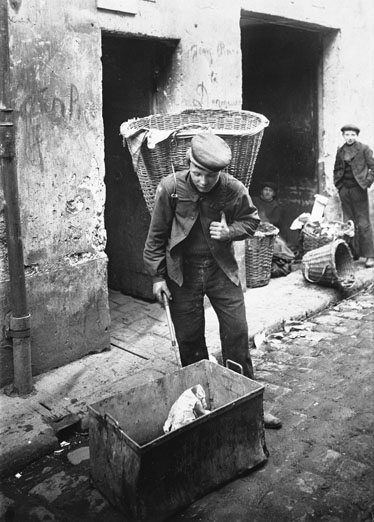Bad times for the rag-and-bone men
What can you expect to find in the newfangled Poubelle trashcans? The installation of mains drainage, and above all the organized collection of household refuse did not make things easy for the ragpickers. The trashcans devised by the Prefect of the Seine département, Eugène Poubelle were accused of halving the income of the ragpickers.
Before the bylaw, the head of a household with a wife and three children earned 10 francs per day, on average two francs per person. When it was no longer permitted to empty garbage onto the public highway, 50% of the usable waste that the ragpickers used to collect was lost to French industry. Then, instead of two francs per day, the ragpickers earned barely one franc. I am a rag merchant! Before the bylaw, I employed six men and a certain number of women. I used to buy on average 500 francs worth of waste per day; since then, I have been buying only 140 or 150 francs worth; instead of six men, I employ only three, and out of ten or twelve women I have had to dismiss half. Now these men and women who cannot work with me anymore, cannot find work with my fellow rag merchants either. They are on the streets of Paris, unable to find work. It is obvious that these women can hardly go and become seamstresses or make lingerie. This is the crisis we are suffering from.
Extract from the declaration of M. Potin, master ragpicker, to the Committee of 44, a parliamentary commission on workers' situations, cited by Joseph Barberet in Le travail en France: monographies professionnelles
Master ragpickers joined forces with the more lowly pickers to defend their interests before the authorities. This resulted in an arrangement whereby a ragpicker could take part in the rounds of the garbage trucks. However, the gradual implementation of Eugène Poubelle's 1883 bylaw marked the end of the golden age for ragpickers.











